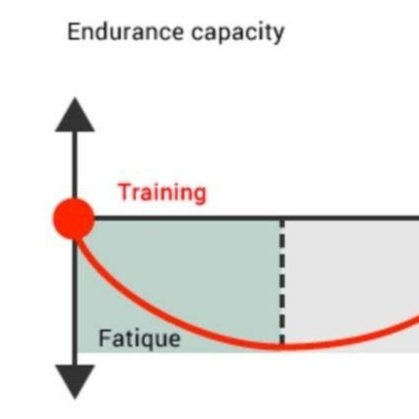
adventure blog
What is Scapular Dyskinesis?
Scapular dyskinesia is a broad term used to describe a range of dysfunctional or abnormal movements of the scapula (shoulder blade). The term “dyskinesia” literally means bad or abnormal movement (“dys” = bad/abnormal, “kinesia” = “movement”). Learn more from our experienced physiotherapists.
How are you improving climbing power?
A majority of training in recreational climbing is often hangboards, weight-lifting, and some dry-training (speed work). Unfortunately this appears to work only on the ends of the training spectrum. Elite climbers incorporate a significant portion of power into their training. This is known as contrast training. Contrast training is an advanced method for improving both strength and power through combining high-load strength exercises with plyometric movements targeting the same muscle groups. Research shows that heavy loading of a muscle induces a high degree of central nervous stimulation lasting from 5 to 30 minutes.
Deloading in Climbing
Have you ever wondered why you are finally able to send your project after a few days of rest, rather than trying day-after-day?
This trend does not appear to be only exclusive to climbing but in other aspects of performance as well. Researchers in a 2003 study found that approximately two weeks of rest in weight-lifters actually increased their maximum squat and bench press weight.
This seems counterintuitive, is less really more?
Biceps Rupture in Climbers
The biceps brachii muscle is a multi-joint muscle that spans both the shoulder and the elbow, meaning it has a role in movement at both of these joints. Its main action is elbow flexion (bending the elbow), but it also has many secondary actions such as forearm supination (turning the palm up), and shoulder flexion (raising the arm overhead).
A biceps tendon rupture denotes an injury where the biceps muscle is subjected to excessive loads and detaches from one or more of its proximal attachment sites.
The most common locations for a biceps tendon rupture are at the proximal attachment of the long head (where it connects to the glenoid labrum), and distally where the tendon inserts into the radius.
Biomechanics of the Pull-Up
Pull-ups are a core training exercise for most climbers. The grip position used in a pull-up has a significant impact on which muscles are being used and therefore being strengthened. Understanding the anatomy and biomechanics of the different variations of the pull-up can help you more specifically target your strength training for specific muscle groups and movement patterns. This is particularly important for athletes with shoulder and/or elbow pain to ensure you are loading the different structures of the arm and shoulder appropriately.
Neural Tension (Nerve Entrapment) Physio for Rock Climbing
Nerve entrapment is difficult to diagnose because the location, signs, and symptoms mimic those of other common musculoskeletal disorders that climbers experience such as lateral epicondylitis (tennis elbow), and medial epicondylitis (golfer’s/climber’s elbow).
Regardless of whether you have nerve entrapment or a tendinopathy such as lateral or medial epicondylitis, the first step to recovery will be an accurate diagnosis so that you can begin an appropriate treatment protocol to alleviate your symptoms.
FDP Injury and Rehab
Flexor Digitorum Profundus (FDP) is a muscle that extends from our elbows, down our forearms, and attaches to the bones of our fingers via its tendons. The FDP muscle is involved in finger flexion (bending/curling our fingers) making it an extremely important muscle for climbing. Our FDP muscles are involved with a variety of climbing grips (crimps, pinches, slopers, jugs, etc.), and developing FDP strength is essential for climbing performance, but it is also one of the most common sources of hand, finger, or forearm pain and injury in climbers.
Ankle Mobility and Strengthening for Climbers
Without good ankle strength throughout the entire range of motion of the ankle, a climber may be able to get into positions requiring good mobility but will have difficulty moving out of them. Additionally, ankle strength and mobility are important for generating power for dynos, toe hooks, and heel hooks, as well as injury prevention — for example, preventing ankle sprains when landing on a crashpad, or tough heel-toe cams.
Pinching, Crimping, and Big-Wall Blues: De Quervain’s Tenosynovitis
De Quervain’s Tenosynovitis is a painful condition that affects the tendons at the base of the radial (thumb) side of the wrist. De Quervain’s Tenosynovitis occurs when the tendons at the base of the wrist become irritated or restricted. This condition is often linked to activities requiring repeated wrist movements or grasping including gardening, tennis, texting, golf, hammering, and rock climbing.
Prevention and Treatment of “Belayer’s Neck”
Belayer’s neck is a term climbers use to describe pain and stiffness in the back of the neck that occurs as a result of looking upwards and belaying for long periods of time. The term belayer’s neck isn’t a single diagnosis, but rather a colloquial term used to describe a wide range of conditions that cause the symptoms belayers often experience at the back of their necks.
Recovery in Climbing (Part II) - 3 Ways to Recover
Part II of our series, “Recovery in Climbing.”
Can’t help but wonder - is there a difference in short, medium, and long-term recovery? Should you approach each differently? Short answer - yes.
Long answer - read on to learn more about how to maximize recovery from our Vancouver physiotherapy author Rachel Rubin-Sarganis.











